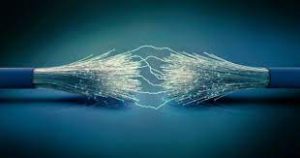Fibre Optic Cables : Increasing Demand

With the increasing demand for high-speed internet connections Optical Fibres have been materialized into the present-day reality of high-speed data transmission.
- Optical Fibres are thin, cylindrical strands composed of glass, with a diameter typically comparable to that of a human hair.
- These fibres possess the remarkable ability to transmit various forms of information, including text, images, audio, video, phone calls, and any data that can be digitized, across vast distances at speeds approaching that of light.
- They are strong, lightweight, and remarkably flexible, making them suitable for burial underground, submersion underwater, or coiling around a spool.
- Almost 60 years ago, physicist Charles Kao proposed the concept of using glass Fibres as a superior medium for telecommunications, superseding the prevalent copper wires.
- His groundbreaking contributions to Fibre optic communication earned him a share of the 2009 Nobel Prize in Physics.
- Fibre provides more bandwidth and has standardized performance up to 10 Gbps and beyond, something that it is impossible to achieve when using copper.
- More bandwidth means that Fibre can carry more information with far greater efficiency than copper wire.
- Since data travels in the form of light in Fibre-optic cables, very little signal loss occurs during transmission and data can move at higher speeds and greater distances.
- Fibre-optic cable is also much less susceptible to noise and electromagnetic interference than copper wire.
- It is so efficient, in fact, that roughly 99.7% of the signal reaches the router in most cases.
- Fibre-optic cable is completely immune to many environmental factors that affect copper cable.
- The core is made of glass, which is an insulator, so no electric current can flow through.




